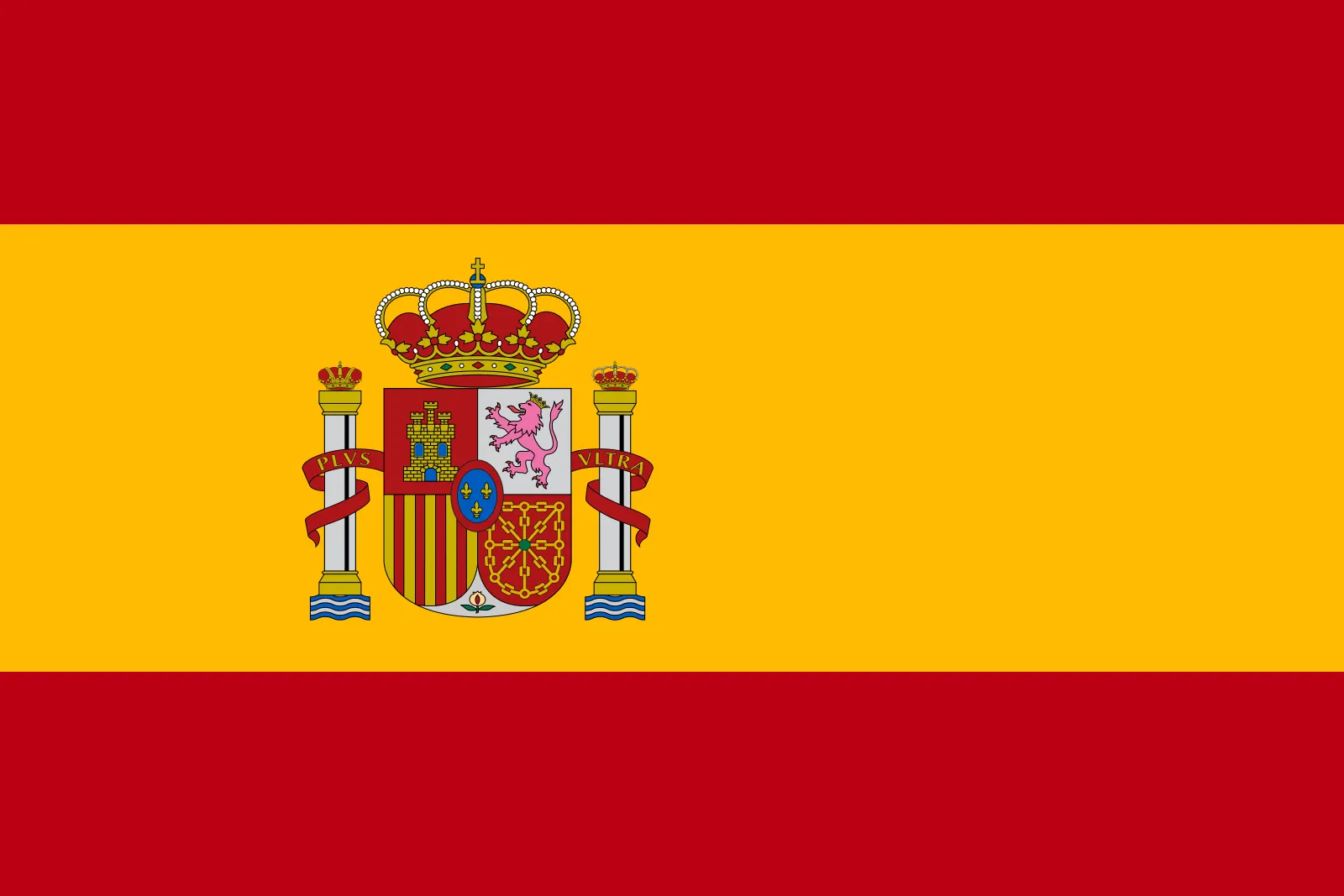All our tours are 100% customizable
Golden Triangle in India – 06 nights/07 days
Price to be reconfirmed – 330 Euro/pp minimum -02 persons
Delhi-Jaipur-Abhaneri-Fatehpur Sikri-Agra-Delhi
Day 1 – Arrival in Delhi
Arrival at New Delhi International Airport.
After completing immigration procedures and collecting your luggage, our representative will be waiting for you outside the Terminal.
Check-in at 2:00 PM / Check out at 12:00 PM.
Jama Masjid :- the largest and most famous mosque in India, stands not far from the Red Fort and Chandni Chowk, the oldest and busiest market in Old Delhi. Built by Shah Jahan in the 17th century, Jama Masjid is among the busiest in Delhi for pilgrims and tourists.
Old Delhi :- The characteristic atmosphere of Delhi’s markets can be best savoured in Chandni Chowk and in general in the narrow streets that are teeming at all hours with vendors and goods of all kinds. According to legend, just like Jama Masjid and the Red Fort, the Chandni Chowk market was also established during the reign of Mughal Emperor Shah Jahan.
Red Fort (photo stop): – Red Fort is one of the works commissioned by the Mughal Emperor Shah Jahan in the 17th century, its construction took about 9 years of work and cost 10 million rupees.
Raj Ghat :- Raj Ghat memorial marking the cremation site of Mahatma Gandhi, the man known as the Father of the Nation and a symbol of world pacifism.
Laxmi Narayan Temple: – Lord Narayan is with his consort Goddess Laxmi (the goddess of prosperity), hence the temple is called Laxminarayan Temple.
India Gate: – In the center of New Delhi stands the 42 m high India Gate, an “Arc de Triomphe” like arch in the middle of a crossroads. Almost similar to its French counterpart, it commemorates the 70,000 Indian soldiers who lost their lives fighting for the British Army during World War I.
President’s Hous, old and new Parliament Building (Photo stop).
Gurudwara Bangla Sahib: – is one of the most important Sikh gurdwaras, or Sikh house of worship, associated with the eighth Guru, Guru Har Krishan, and is also known for the pool within its compound, known as “Sarovar”.
Overnight stay in Delhi.
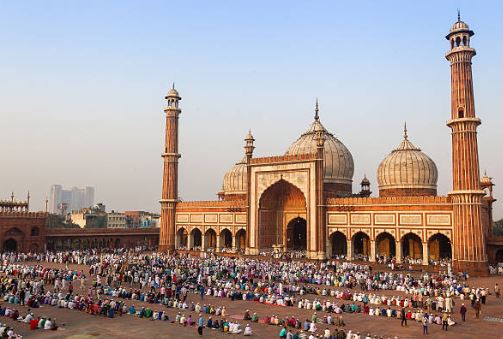
Day 2 – Delhi-Jaipur (281 Km, 5 Hours)
After breakfast, depart for Jaipur.
Birla mandir :- Birla Temple, Jaipur At the foot of the Moti Dungri fort is the Birla Temple. This temple is one of the most beautiful attractions of Jaipur. The Birla Temple of Jaipur is beautiful when it is illuminated at night. The construction of the temple started in 1977 and continued till 1985. On 22nd February 1985, the deity of the temple was invoked and it was opened for public viewing. The temple was built by Birla Group of Industries, one of the business magnates of India.
Local Market: – Jaipur which is famous for jewellery and clothes is most visited by people who love both. There are many famous markets in Jaipur which sell precious stones, gems, semi-precious stones and jewellery.
Overnight stay in Jaipur.

Day 3 – Jaipur
After breakfast the day begins.
Amer Fort: – Amer is a city with an area of 4 square kilometres (1.5 sq mi) located 11 kilometres (6.8 mi) from Jaipur, the capital of Rajasthan. Situated on top of a hill, it is the major tourist attraction in the Jaipur area. The city of Amer was originally built by Meenas, and was later ruled by Raja Man Singh I (21 December 1550 – 6 July 1614).
Jal Mahal (Outdoor Photo Stop): – Jal Mahal is a work of art located in the middle of Man Sagar Lake, the palace will give you the illusion of almost floating on top of the lake and that is the moment this view will take your breath away.
City Palace: – Jaipur, which includes the Chandra Mahal and Mubarak Mahal palaces and other buildings, is a palace complex in Jaipur, the capital of the state of Rajasthan, India. It was the seat of the Maharaja of Jaipur, the head of the Kachwaha Rajput clan. The Chandra Mahal palace now houses a museum, but most of it is still a royal residence.
Jantar Manta r :- is an equinoctial sundial, consisting of a gigantic triangular gnomon with the hypotenuse parallel to the Earth’s axis. On the sides of the gnomon there is a quadrant of a circle, parallel to the plane of the equator. The instrument is used to measure the time of day, correct to half a second and the declination of the Sun and other celestial bodies.
Hawa Mahal (Photo stop):- Hawa Mahal (English translation: “Palace of the Winds” or “Palace of the Breeze”) is a palace in Jaipur, India, hence its name because it was essentially a high screen wall built so that the women of the royal family could observe street festivals.
Galtaji Temple: – The temple is also known as the monkey temple as there are many monkeys. The temple is dedicated to Lord Hanumana, established in 16th century by Diwan Rao Kriparam who was the advisor of King Sawai Jai Singh II.
Overnight stay in Jaipur.
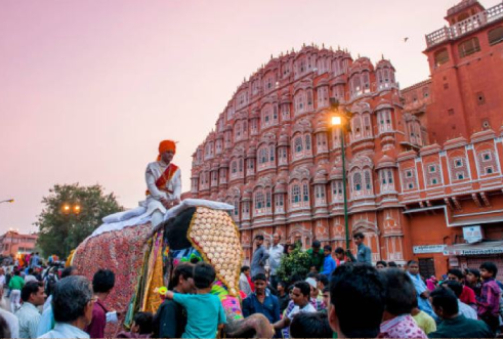
Day 4 – Jaipur-Abhaneri-Fatehpur Sikri-Agra (241 km 4 hours 30 minutes)
After breakfast, depart for Agra.
Along the way we will visit the very famous Chand Baori located in the small village of Abhaneri. Abhaneri: – is famous for the ‘bhaori’, wells dug by the natives to collect rainwater. These structures, depending on the time of year, are used as places to cool off or as water tanks. Chand Baori is the most popular of the wells in the region, and is one of the deepest and largest in India.
Fatehpur Sikri: – Built by the Mughal Emperor Akbar in the mid-16th century, Fatehpur Sikri (meaning City of Victory) served as the capital of his empire for 15 years. Built in Indo-Islamic style, Sikri is a red sandstone complex filled with palaces, mosques, temples and other structures.
Overnight stay in Agra.

Day 5 – Agra-Delhi (237 KM, 4 hours)
After breakfast
Visit Taj Mahal: – is one of the seven wonders of the world and a must-see place in India. It is the living specimen of the romantic life of Shah Jahan and his beautiful wife Mumtaz Mahal. The construction of this beautiful monument was completed in 1653 A.D. The Mughal King Sha Jahan built it as a final resting place for Queen Mumtaz.
Agra Fort: – Agra Fort located on the steep banks of the Yamuna River, this moon-shaped fort was commissioned by Akbar, one of the greatest Mughal emperors, in 1565. Surrounded by mighty walls, the complex has numerous palaces, gardens, halls and other structures of historical sites within the fort.
Mehtab Bagh:- This beautiful garden is located on the western bank of the Yamuna River and is in perfect alignment with the Taj Mahal gardens located across the river
After the visit, departure for Delhi.
Overnight stay in Delhi.
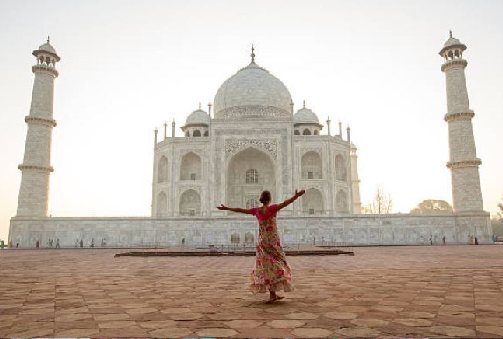
Day 6 – Delhi
After breakfast the day begins.
Humayun’s Tomb: – Humayun is the second Mughal Emperor of India who died in 1556, his widow Hamida Banu Begam, also known as Haji Begam, began the construction of his tomb in 1569, fourteen years after her husband’s death. Humayun’s tomb is the first example of Mughal style, inspired by Persian architecture.
Qutub Minar :- is among the most famous monuments, this beautiful 71 meter minaret is considered as the tallest tower in the world. Qutub Minar is one of the many masterpieces that represents the majesty of the Mughal architects.
The Lotus Temple: – Built in 1986 at a total cost of 10 million rupees, it is a Bahai temple also called the House of Worship and is considered the Mother temple of the Indian subcontinent.
Akhshardham temple – Akshardham’ means the divine abode of God. It is hailed as an eternal place of devotion, purity and peace. Swaminarayan Akshardham in New Delhi is a Mandir: an abode of God, a Hindu place of worship and a spiritual and cultural campus dedicated to devotion, learning and harmony.
Note: Sleeveless clothing, shorts or shorts are not allowed. Electronic products are not allowed.
Overnight stay in Delhi.
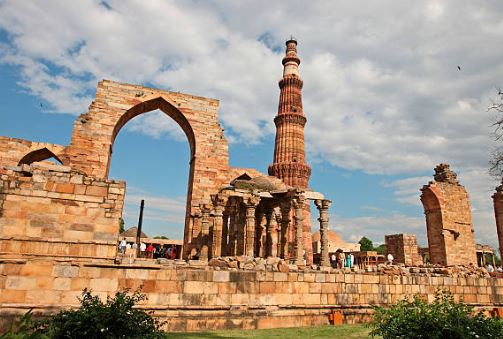
Day 7 – Delhi-Next Destination
Transfer to Delhi airport.
Ciao India Tours wishes you a pleasant journey.
Inclusions:
- 06 nights’ accommodation in 3 star/heritage hotels with breakfast, including all existing taxes.
- All transfers from the airport/station to the hotel and vice versa as per program.
- Meet and assist upon arrival/departure by our representative at the airport.
- All visits by air-conditioned car as per Itinerary.
- Wi-Fi in the car.
- A bottle of water per person every day.
- All taxes included.
- Toll, Parking, Fuel, Driver’s accommodation.
Exclusions:
- Visa, International flight, Health insurance, cancellation/change of flights, trains, Alcoholic beverages, Lunch and dinner, Tips, Tickets for monuments and activities, personal expenses, Camera etc.
- Everything that is not included in the inclusions.




